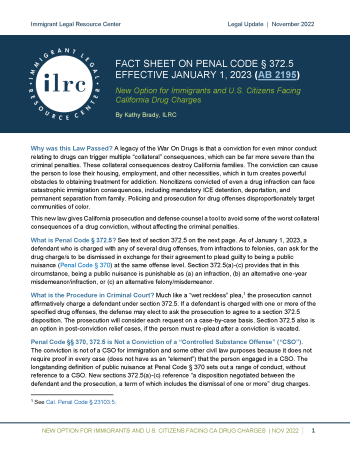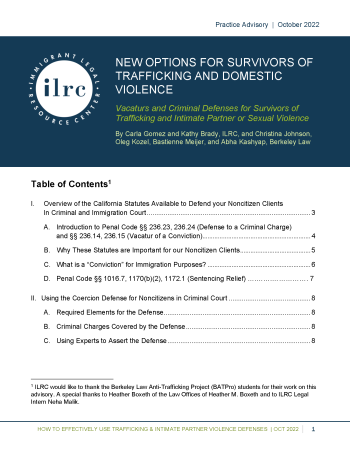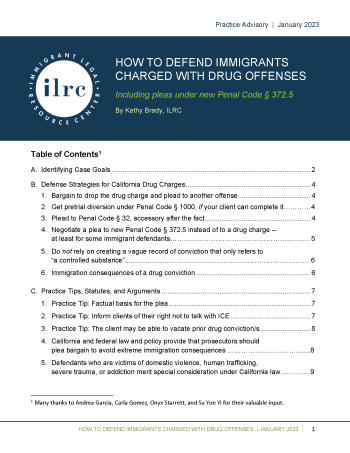Disrupting Deportation: How to Effectively Vacate Convictions for Immigration Purposes
In this webinar, you will learn how to effectively vacate convictions in criminal court to meet the required Pickering standard of “legal invalidity”. We will discuss whether recent resentencing laws and vacaturs enacted for victims of human...



Post-Conviction Relief
The Immigrant Legal Resource Center (ILRC) is one of only a few technical assistance organizations nationally and in California with expertise on immigrant post-conviction relief, including clean slate and other record clearance remedies. Immigrants with criminal convictions are more vulnerable than any other group to being a target for deportation and make up the overwhelming majority of deportations that occur in any year.
The ILRC works to protect the rights of individuals who have come into contact with the criminal justice system through policy and advocacy efforts, numerous in-person and webinar trainings, case-specific assistance, and our pro bono immigrant post-conviction relief project.
For people whose convictions effectively close all doors to immigration relief, vacating the conviction in criminal court is the only way to preserve a chance of remaining in the United States. The underlying convictions are frequently unlawful. Commonly, the defect lies with a noncitizen defendant’s failure to understand or have been advised or defended against a conviction’s immigration consequences. Recognizing that “deportation is an integral part—indeed, sometimes the most important part—of the penalty that may be imposed on noncitizen defendants,” the Supreme Court held in Padilla v. Kentucky that a defense counsel’s failure to provide this immigration advice renders a conviction unconstitutional.”
California Post-Conviction Relief Vehicles

Helping Immigrant Clients with Post-Conviction Legal Options
FOIA
Level: IntermediateThis webinar will discuss FOIA requests in immigration cases and provide tips for filing FOIA requests with DHS, including USCIS, OBIM, ICE and CBP. Researching clients’ case histories may become particularly important if any of...
Post-Conviction Relief For Immigrants: New Laws, New Developments, New Advice
Level: Intermediate / AdvancedThe field of post-conviction relief is constantly changing. Tune in to hear about newly enacted state laws, new case developments, and new advice for immigrant post-conviction relief practitioners. This webinar will be...
Crimes & Immigration Law (LA)
Location: Southwestern Law School, 3050 Wilshire Blvd., Los Angeles, CA 90010
Crimes & Immigration Law (SF)
Location: University of San Francisco School of Law, 2130 Fulton Street, San Francisco, CA 94117